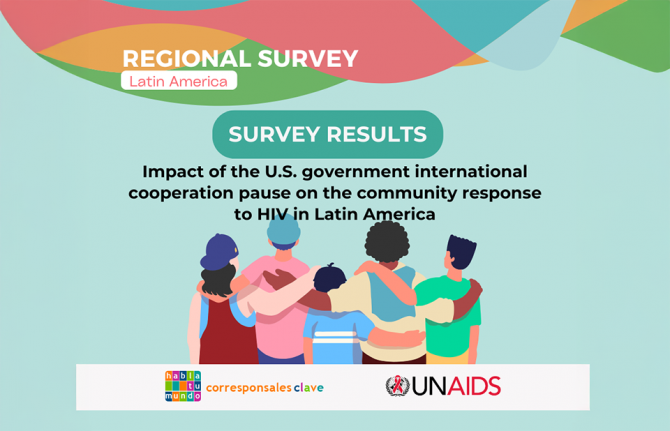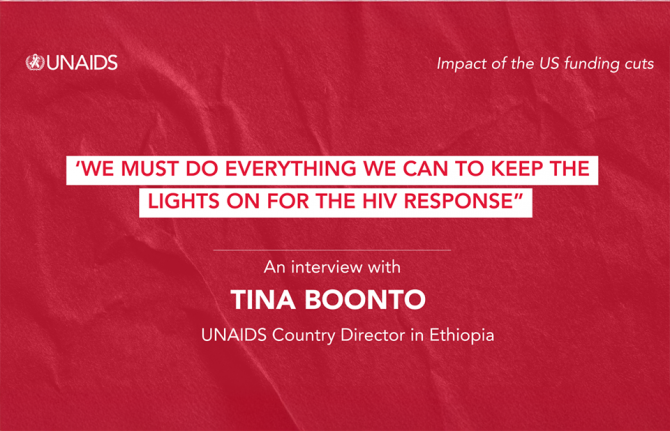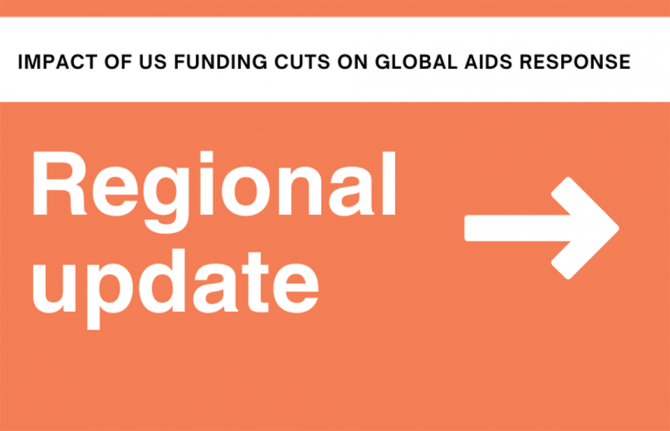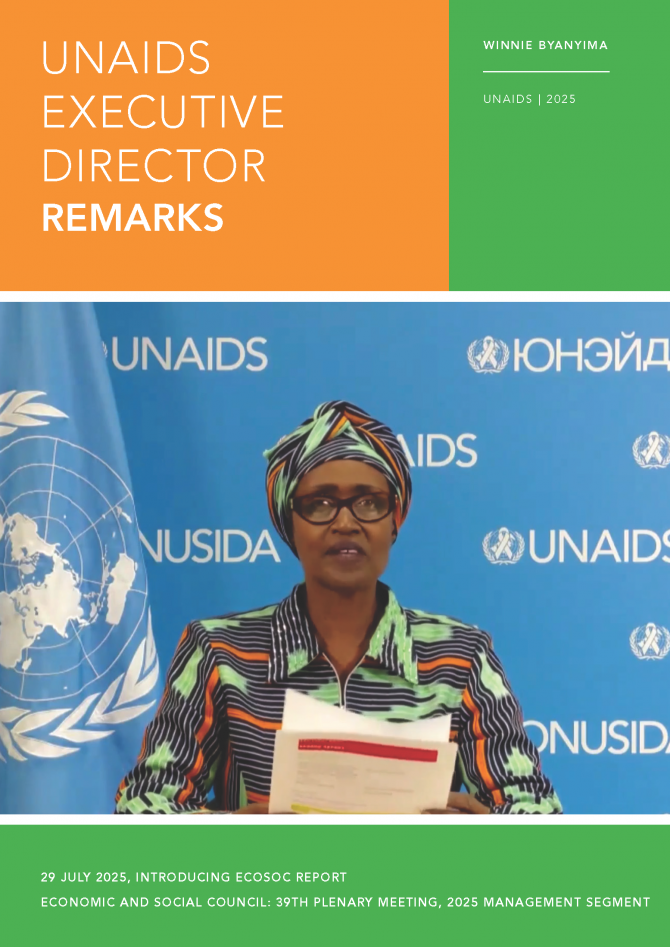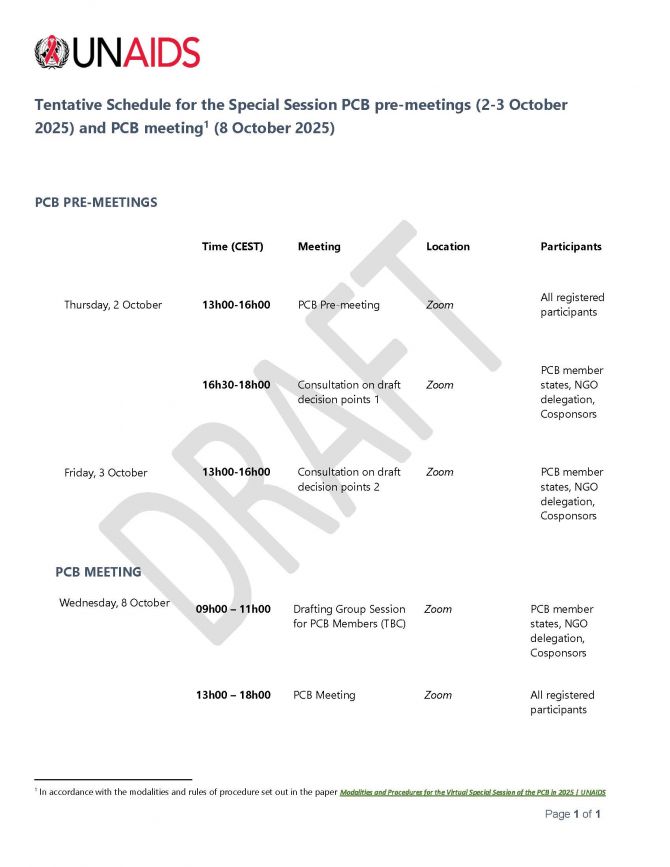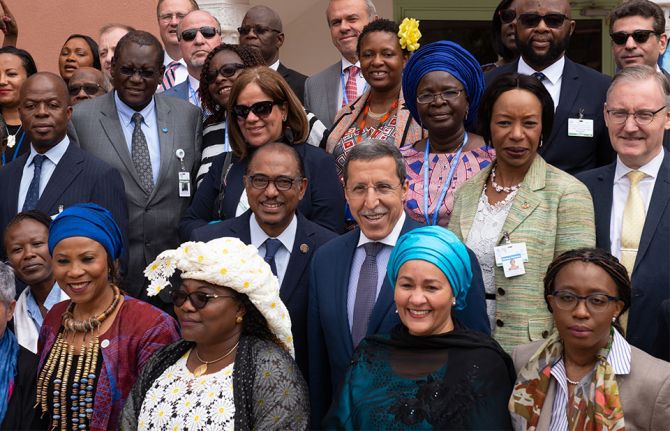

Feature Story
Empowering young women in Cité Soleil: a model for reducing vulnerability to violence in Haiti
08 August 2025
08 August 2025 08 August 2025This story first appeared in the UNAIDS Global AIDS Update 2025 report.
Gang violence in Haiti is contributing to a dire humanitarian crisis in a country where 5.7 million people face acute food insecurity and more than a million people are internally displaced, half of them children. In the country’s capital of Port-au-Prince, only 50% of healthcare facilities are operational, and access to essential health services, including HIV treatment, is severely limited. Amidst the escalating insecurity, ruthless sexual violence, including gang rape, is rampant, exacerbated by restricted or suspended gender-based violence services.
More than 6500 incidents of gender-based violence were reported in 2024, although this number is likely to be significantly underreported. Nearly two-thirds of these incidents involved rape or sexual assault. Between 2023 and 2024, there was a shocking 1000% increase in sexual violence against children.
“I was a victim of gang rape in 2021,” says 29-year-old Laguerre Myrline. “This happened when we had to abandon our home to flee the attacks of armed men. At the southern entrance of Port-au-Prince, I was assaulted by several men. They abused me one after the other. Traumatized, I didn’t even go to the hospital.”
Women and children remain particularly at risk in this crisis. The Organization for Development and Poverty Reduction (ODELPA), a civil society organization supported by UNAIDS and the United Nations High Commissioner for Refugees (UNHCR), is implementing a transformative initiative aimed at reducing sexual and gender-based violence and other systematic violence in Cité Soleil, an impoverished and densely populated commune in Port-au-Prince.
The initiative includes capacity building and economic empowerment via training on HIV prevention, prevention of gender-based violence and mental health support for girls, young women and men. Through these efforts, 180 beneficiaries have received startup funds to launch income-generating activities and businesses, helping them to break the cycle of financial dependence and offering a sustainable pathway to resilience and autonomy.
The programme has been so successful that the training sessions have been replicated for more than 1000 members of grassroots community organizations. In addition, ODELPA launched a multimedia communication campaign to raise awareness and provide education on prevention of gender-based violence.
The campaign reached more than 1.5 million people across Haiti and the Haitian diaspora through four radio programmes. The project applies a holistic approach that combines education, economic empowerment and community-driven solutions as key elements to breaking cycles of violence and inequality and ensuring girls and young women can reclaim their rights and dignity and their future.
In Haiti, the recent funding cuts have had a huge effect on the national HIV response, which was almost 100% funded externally and almost entirely reliant on PEPFAR (which provided about 90% of HIV funding) and the Global Fund (which contributed the remaining 10% of funding). Civil society organizations have been significantly impacted by the funding cuts, particularly those that provide services for people from key, priority and vulnerable populations. This has increased vulnerability to stigma, discrimination and gender inequality, and weakened responses to sexual and gender-based violence.
The youth project implemented by ODELPA and supported by UNAIDS and UNHCR is a small beacon of hope. Sustainable funding will be required to support the response to HIV in Haiti, including urgent renewed global solidarity
Global AIDS update 2025
Region/country
Related
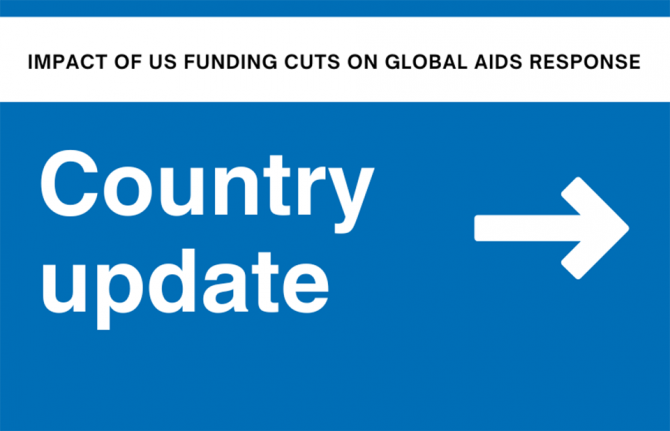 Impact of US funding freeze on HIV programmes in Haiti
Impact of US funding freeze on HIV programmes in Haiti

13 March 2025
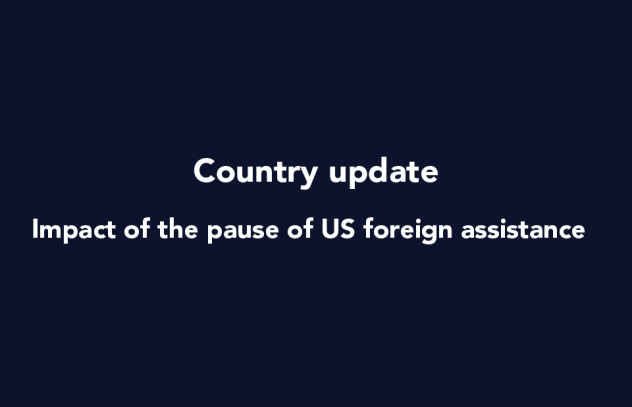 Comprehensive Update on HIV Programmes in the Dominican Republic
Comprehensive Update on HIV Programmes in the Dominican Republic

19 February 2025

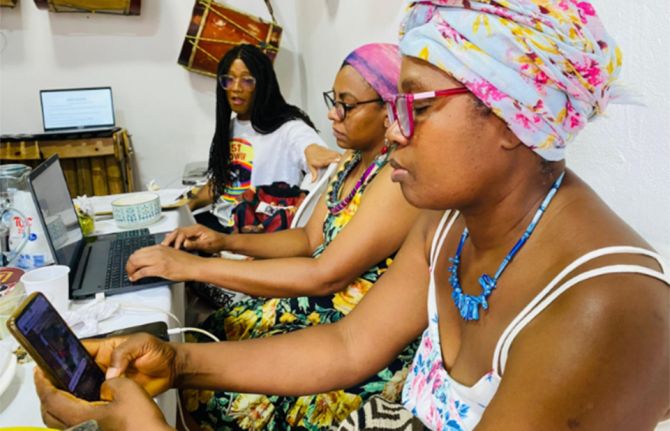
Feature Story
Colombian Afro-descendant women are shaping the HIV response in their own terms
06 August 2025
06 August 2025 06 August 2025This story first appeared in the UNAIDS Global AIDS Update 2025 report.
In Colombia, Afro-descendant women are taking the HIV response into their own hands. Faced with racism, inequality and violence—factors that make them more vulnerable to HIV—they are organizing themselves, speaking out, and demanding better access to health care, protection and rights.
In the Caribbean and Pacific coastal regions of Colombia, women represent half of all people diagnosed with HIV, compared with only a fifth at the national level. This gap is tied closely to gender inequality and other structural barriers such as violence and poor access to basic health services, including HIV testing and treatment. In addition, stigma—worsened by racism and sexism—makes it harder for many women to get an education, find work or receive proper medical care, leaving them more exposed to the risks of HIV.
Armed conflict and forced displacement have affected communities, exacerbating poverty and exposure to violence, including sexual violence.
UNAIDS, through the help of key donors, supports various organizations leading the HIV response in Afro-Colombian, Indigenous and rural communities. The Fundación Afro Mata ’e Pelo works to improve access to information on sexual and reproductive health in the Caribbean region of Colombia, where myths, stigma, discrimination and gaps in training among health workers remain common challenges.
In the Valle del Cauca department, located along the Pacific coast and within the Andean region, Fundación RedLujo supports transgender women, sex workers and nonbinary people by using artistic and pedagogical strategies to raise awareness about HIV and advocate for inclusive public policies that guarantee access to HIV prevention and care.
These organizations are bringing change to their communities, taking the lead in the response to HIV and pushing for fair, respectful access to health care. They work with Colombian Government institutions to make sure HIV prevention and care policies reflect local realities and include the voices and needs of communities.
“It is a challenge to make women visible, especially in the contexts and territories where Black and Indigenous women live,” says Yaneth Valencia, HIV activist and founder of the Asociación Lila Mujer, a community-based organization focusing on women in southwestern Colombia. Through their sessions, women learn about HIV prevention and share their experiences. The organization advocates for better access to services and promotes the participation of women as agents of change in their territories.
“These spaces of sisterhood—of comadreo, as we call them in the communities—allow us to talk with our comadres. These can be self-help groups or peer advisors with whom we can talk and trust. It is also about recovering all that ancestry that allows us to reconnect and resist because we not only exist—we resist in a macho, racist, classist and very white context.”
Afro-descendant women are leading community efforts in Colombia to respond to HIV with a focus on human rights. They are ensuring the response meets the real needs of their communities. Their work gives a voice to people often left out of HIV efforts and defends their right to health and dignity.
Global AIDS update 2025
Region/country

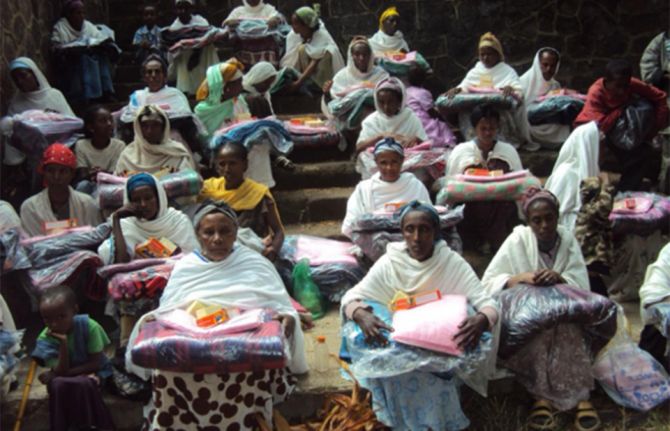
Feature Story
Community workers at the heart of a resilient HIV response in Ethiopia
04 August 2025
04 August 2025 04 August 2025This story first appeared in the UNAIDS Global AIDS Update 2025 report.
Amhara in northern Ethiopia is a region with a rich cultural history. The birthplace of the national language, Amharic, it is home to ancient churches such as the UNESCO World Heritage Site of Lalibela. In April 2023, the region was plunged into crisis when internal armed conflict erupted. The consequences were devastating.
Thousands of people were displaced, gender-based violence surged, essential services such as health and education were disrupted, and travel between cities became almost impossible.
As formal systems broke down, local community-based organizations and drop-in centres in urban areas such as the regional capital Bahir Dar continued to monitor the situation on the ground and provide vital services. These organizations became lifelines for people living with HIV, people from key populations and young people.
This changed in February 2025. Cuts in United States funding disrupted essential services. Many community-run organizations that relied on those funds were forced to close. Outreach workers who had built trust with people on their doorsteps were suddenly laid off. Peer support groups vanished. Fear took hold.
“I often find myself overwhelmed with stress,” says a member of one women-led association of people living with HIV. “If medicine and other services stop, where will I go? I simply do not have the means to afford the treatment I need.”
The data collected by the association paint a stark picture. For two months, no new clients have been enrolled in PrEP. “One of my biggest concerns is not having access to condoms,” says a case manager. “Without them, HIV will spread much more easily.”
She adds, “Without a financial budget, our members are left without the basics, no food, medical care, transportation, no hope. They have families. They rely heavily on this support. It would make a huge difference if members could access free medical treatment and hospital services. Many cannot even afford one meal a day. Their health is deteriorating. Their children are suffering. What they need most is dignity, food and a fighting chance.”
Yet even when faced with collapse, communities refused to give up. Young volunteers formed informal networks and WhatsApp groups to check on peers and stay connected. Mothers banded together to support children’s treatment. Youth collectives used community radio and shared airtime to spread critical health information.
Where formal systems failed, communities built their own safety nets.
The situation in Bahir Dar was a wake-up call. It exposed the fragility of systems dependent on a single funding source.
This crisis shows that resilience must be built into HIV responses from the start. Community-led and youth-driven responses must be recognized, resourced and scaled up. UNAIDS is providing support to community organizations to access funding support from local government authorities and private foundations to empower them to continue this important work of community outreach to the most vulnerable populations.
The conflict in the region has shown once again that HIV must feature in humanitarian, development and recovery agendas. The intertwined challenges of conflict, displacement, gender-based violence and HIV demand integrated, person-centred solutions. This will not happen if HIV is treated as an afterthought or is equated only with clinical care and if community-engagement is not recognized and supported.
Global AIDS update 2025
Region/country

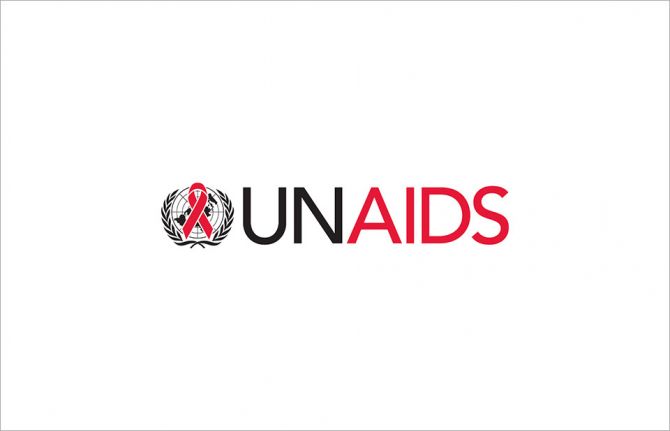
Press Release
UNAIDS hails historic court ruling in St Lucia decriminalizing consensual same-sex relations
30 July 2025 30 July 2025A milestone for human rights which accelerates access to HIV services, free from discrimination in the Caribbean which will advance efforts to end AIDS by 2030
Kingston/Geneva 30 July 2025—UNAIDS celebrates the groundbreaking decision by the High Court of Justice in Saint Lucia declaring sections 132 and 133 of the Criminal Code unconstitutional for criminalizing consensual adult sexual acts in private. This triumph upholds LGBTQ+ people’s rights to protection of the law, privacy, non-discrimination, freedom of expression, and equal protection under the law, as guaranteed by the Constitution.
"This landmark decision underscores the transformative power of the law in protecting human rights and public health," said Luisa Cabal, UNAIDS Regional Director for Latin America and the Caribbean. "In a region where punitive laws hindered progress towards ending AIDS, Saint Lucia's High Court has set a powerful precedent. UNAIDS stands ready to support all governments and communities in ensuring everyone can live free from discrimination and access the services they need to thrive healthily and safely," said Ms Cabal.
The case is one of the five country strategic litigation initiatives of the Eastern Caribbean Alliance for Diversity and Equality (ECADE) which has been working closely with LGBTQ+ organizations, individuals and allies to protect and promote the community’s basic human rights. The case removes out-dated, colonial-era barriers that fuel stigma, discrimination and violence. The Court modified the laws relating to exclude private consensual acts between adults (section 132) and those aged 16+ (section 133), paving the way for dignity and equality to be respected.
Saint Lucia now joins Belize (2016), Antigua and Barbuda (2022), St. Kitts and Nevis (2022), Barbados (2022), and Dominica (2024), which decriminalised same-sex intimacy in recent years. This chronology reflects a surging momentum against outdated laws, fostering more inclusive, rights-based societies across the region.
"The ruling in Saint Lucia gives us hope, demonstrating that justice and equality can prevail and that our courts are advancing public health initiatives by protecting human rights," said Richard Amenyah, UNAIDS Country Director for the Caribbean. "By removing these outdated criminal provisions, we open doors for LGBTQ+ individuals to seek HIV prevention and care without fear, ultimately strengthening our regional fight against HIV and saving lives."
UNAIDS champions this move as a key stride toward zero discrimination and ending AIDS by 2030. By erasing these discriminatory provisions, the ruling removes an obstacle to HIV prevention, testing, and treatment, vital in a region where gay, bisexual and other men who have sex with men and transgender women have disproportionately high rates of HIV and often are kept away from health services for fear of stigma, discrimination and criminalization.
UNAIDS urges remaining countries where these discriminatory laws remain on the books to repeal such laws and prioritize rights-based HIV strategies for healthier futures and more equitable societies.
UNAIDS
The Joint United Nations Programme on HIV/AIDS (UNAIDS) leads and inspires the world to achieve its shared vision of zero new HIV infections, zero discrimination and zero AIDS-related deaths. UNAIDS unites the efforts of 11 UN organizations—UNHCR, UNICEF, WFP, UNDP, UNFPA, UNODC, UN Women, ILO, UNESCO, WHO and the World Bank—and works closely with global and national partners towards ending the AIDS epidemic by 2030 as part of the Sustainable Development Goals. Learn more at unaids.org and connect with us on Facebook, Twitter, Instagram and YouTube.
Contact
UNAIDS LACDaniel de Castro
tel. +507 6998 3175
decastrod@unaids.org
UNAIDS Caribbean
Jaevion Nelson
tel. +1 876 459 3211
nelsonj@unaids.org
Our work
Region/country


Feature Story
Using sports to combat gender stereotypes and learn about HIV
30 July 2025
30 July 2025 30 July 2025This story first appeared in the UNAIDS Global AIDS Update 2025 report.
Marouane Abouzid grew up in Casablanca, Morocco, where many boys act like bullies and sex is taboo. That changed when he joined the project Sport Is Your Protection, where he gained knowledge about gender equality and health. “The training on HIV awareness led by UNAIDS and Tibu Africa was a transformative experience in the sense that I saw how sports can be an effective way to get a message out,” the 25-year-old says. “It also gave me essential skills like communicating clearly and active listening.”
He enjoyed the project so much that he trained to lead sports activities and participate in other sessions. “I talk openly about what I have learned. I encourage my friends to get tested for HIV and encourage people to respect others,” he says, excited about becoming a role model for his peers.
Marouane describes the activities as a safe space to discuss all sorts of issues that young people face in Morocco, such as poverty, unemployment and a patriarchal system.
Marouane is not alone. Assia Ezzahraoui, a participant in the Tibu Africa sports vocational school programme, joined the weeklong sexual education awareness meeting. “The informative sessions gave me new insights into symptoms, prevention methods and available treatments,” she says. Assia feels more secure about how to protect herself and her friends.
Tibu Africa was founded in 2011 and aims to bring the programme across different cities in Morocco. UNAIDS joined with Tibu Africa in 2024. “This first partnership with UNAIDS Morocco mobilized young people around issues to transcend barriers and create opportunities for dialogue and awareness,” says Mohamed Amine Zariat, President of Tibu Africa. “We hope this first step will serve as a springboard for future, even more ambitious initiatives.”
An estimated 24 000 [21 000–26 000] people are living with HIV in Morocco, and nearly 40% of these are women. Although the prevalence of HIV is relatively low in Morocco, vulnerable populations such as sex workers, gay men and other men who have sex with men and people who inject drugs are particularly at risk. Moroccan youth represent more than 30% of the total population, but a quarter of people aged 15–24 years have no job and lack education and training—young women are particularly hard hit.
Houssine El Rhilani, UNAIDS Country Director in Morocco, is aware of this. He believes the collaboration with Tibu Africa combining sport, education and awareness-raising can empower young people. “We were able to reach young people not only with information, but also through experience, providing them with concrete tools to become prevention ambassadors in their own communities,” he says. “We cannot end AIDS without prioritizing future generations.”


